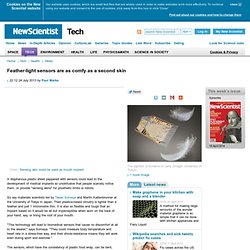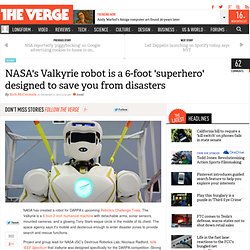

Mashable. Humans can program robots to do lots of things, but robots still falter when it comes to the unpredictability of human life.

They're not great when it comes to responding to objects flying right at them — they're not likely to jump out of the way. Now, catching those objects is a distinct possibility for robots. At the Learning Algorithms and System Laboratory (LASA) at Switzerland's EPFL (one of two Swiss Federal Institutes of Technology), researchers combined parts from two robots to make a remarkable robotic arm that catches objects.
In the video above, the somewhat oversized, four-fingered hand is able to catch anything from a tennis racket to a partially-filled water bottle. "I think the main novelty we bring to object-catching is the way we transfer information from a human to the robot," said LASA researcher Ashwini Shukla in the video. Researchers took a lightweight robot arm from German company KUKA and attached an Allegro Hand from SimLab. Major leaguers should take note, too. Wait, What?: Scientists Create First Cyborg Sperm. Scientists at the Institute for Integrative Nanosciences in Dresden, Germany, have developed "robotic sperm" by trapping bull sperm in metal nanotubes then controlling the direction they swim with a magnetic field.

Personally, I don't care how strong that magnetic field is, mine would still swim in circles because they are DETERMINED to not get anything pregnant. "They're not even swimming, they're just lying on the bottom like a pile of dead Sea Monkeys. " Really? *tapping on glass* Maybe they're just resting. The resulting biobot (a 'biological robot', referring to a bacterium or cell which has been programmed to behave in a certain way) could be put to a range of uses, including delivering drugs to a specific target in the body or fertilising an egg, reports New Scientist. Did you know actual robot sperm are just bullets?
Hit the jump for an actual video of sperm being magnetically controlled. Feather-light sensors are as comfy as a second skin - tech - 24 July 2013. Video: Sensing skin could be used as mouth implant A diaphanous plastic sheet peppered with sensors could lead to the development of medical implants so unobtrusive that people scarcely notice them, or provide "sensing skins" for prosthetic limbs or robots.

So say materials scientists led by Takao Someya and Martin Kaltenbrunner at the University of Tokyo in Japan. Their plastics-based circuitry is lighter than a feather and just 1 micrometre thin. It is also so flexible and tough that an implant based on it would be all but imperceptible when worn on the back of your hand, say, or lining the roof of your mouth. "This technology will lead to biomedical sensors that cause no discomfort at all to the wearer," says Someya. The sensors, which have the consistency of plastic food wrap, can be bent, stretched, crumpled and placed in wet environments without affecting their ability to operate – key characteristics of artificial skin designed to sense touch or temperature. Stretchy circuits. NASA's Valkyrie robot is a 6-foot 'superhero' designed to save you from disasters. NASA has created a robot for DARPA's upcoming Robotics Challenge Trials.

The Valkyrie is a 6-foot-2-inch humanoid machine with detachable arms, sonar sensors, mounted cameras, and a glowing Tony Stark-esque circle in the middle of its chest. The space agency says it's mobile and dexterous enough to enter disaster zones to provide search and rescue functions. Project and group lead for NASA JSC's Dextrous Robotics Lab, Nicolaus Radford, tells IEEE Spectrum that Valkyrie was designed specifically for the DARPA competition.
Strong legs mean the robot's capable of moving around "degraded environments" typical of disaster-stricken areas, and cameras mounted on its head, body, forearms, knees, and feet, allow it to provide visual information back to its handlers. Extra data can be provided by the robot's sonar and lidar units. Valkyrie builds on the space agency's previous humanoid robot, Robonaut, currently in orbit around the Earth in the International Space Station. SCHAFT : DARPA Robotics Challenge 8 Tasks + Special Walking. Do humans dream of android prostitutes? This site may earn affiliate commissions from the links on this page.

Terms of use. In the next five years or so it will be possible to build lifelike robots. These robots will look, move, and feel like fellow humans — but, unless the technological singularity comes early, these robots won’t be excellent conversationalists. According to some recent research, though, they will make fantastic prostitutes. If you’ve ever read a sci-fi novel or spent a little time thinking about the future, the concept of having sex with a robot probably doesn’t surprise you — I mean, it’s going to happen eventually, right? Still, there’s a lot to be said for robostitutes. In one fell swoop, at least according to Ian Yeoman and Michelle Mars (the authors of recent paper called “Robots, men and sex tourism.” Google's robot army in action. Skeleton Muscle Bot Brings I, Robot's Future One Step Closer.